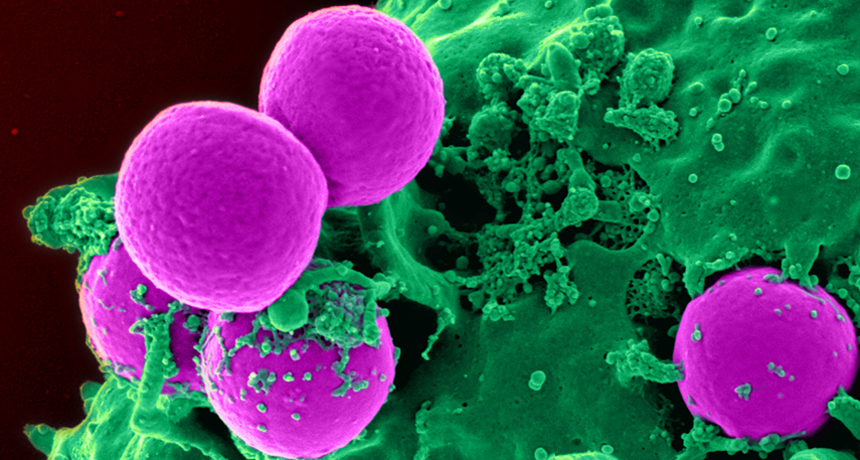Drug resistance has gone global, WHO says
World Health Organization reports that antibiotics are failing worldwide against infections

WORSE THAN EVER Staphylococcus aureus microbes resistant to the drug methicillin,shown being attacked by an immune cell (green) in this micrograph, are among many bacteria becoming more prevalent, WHO reports.
NIH